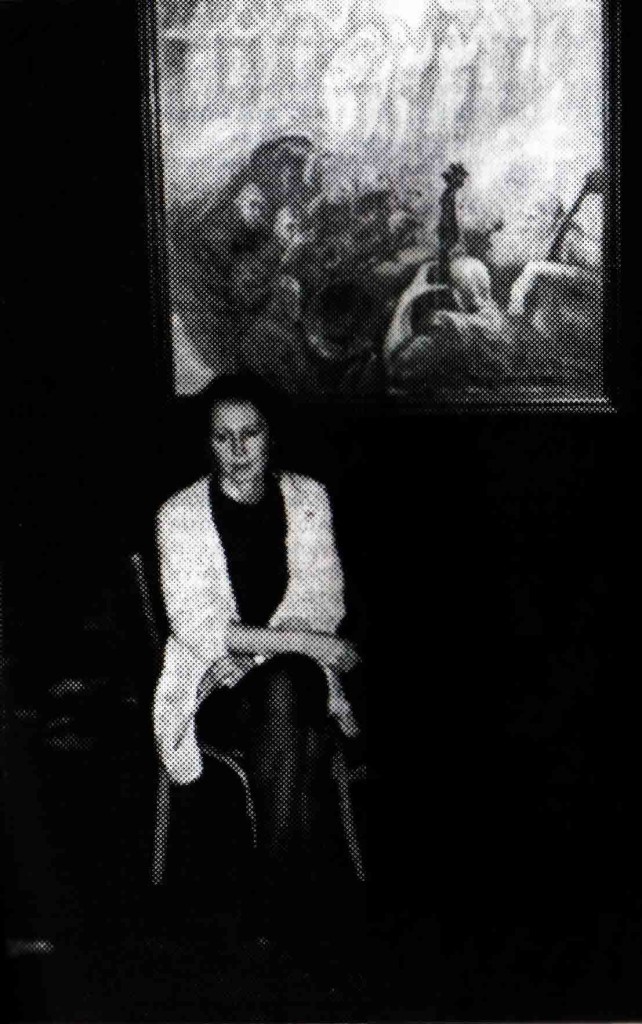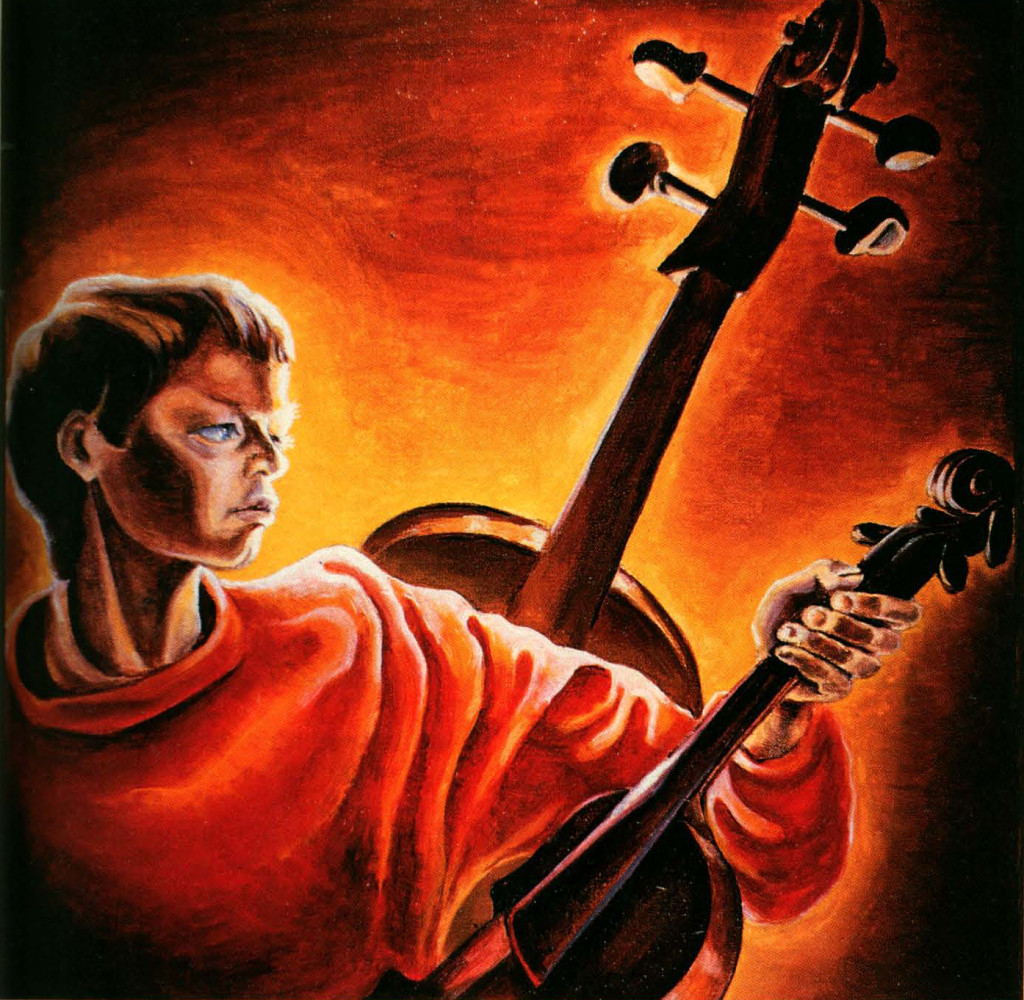Year Two of the Age of Blues: Interview with the Editor-in-Chief
Published in: 06. MetaphorLet’s remember that we’re not just talking about a newspaper. Apraksin Blues is in many ways an exceptional phenomenon, disproving typical beliefs (including about mass media) and rules. The usual standards don’t apply to our publication. Understanding its value means considering the qualities that belong to it alone.
— For instance, quite a few of our regular readers never even hold any other newspaper in their hands and have trouble recalling even two or three of the more common newspapers’ names.
— Conceptually, this newspaper is fundamentally different from others. While this newspaper has no interest in showing off its originality, it’s essentially impossible to copy or imitate — like any independent thought, or like a work of art. For the same reason, it has no competition. It can have no rivals.
— We’re incredibly lucky: it’s our great joy to be creating something that’s never existed before. Our work is unique — today, when the newspaper’s character and principles are well-defined, facts and experience affirm this. Our historical impact is guaranteed. That means we have to be especially demanding, exactingly so — starting with ourselves, of course.
— In a certain sense Apraksin Blues can be considered a sensational publication. And not just because it stands on an unusual foundation. Every issue of the newspaper contains almost nothing but sensations.
— First of all, these are entirely first publications. And the expository style isn’t at all like in newspapers. Apraksin Blues is completely free of those journalistic clichés which it seems the mind can no longer digest and which seem able to eviscerate the essence of even the most untrivial reporting or opinions.

Presenting Apraksin Blues at the Theater of Rains, St. Petersburg, 1995. Tatyana Apraksina Onstage with Her Model of the Mass 2.
— Besides this, every issue contains materials that quite rightfully can be assessed as part of an elite class of strikingly conspicuous sensations — and these sensations will never grow old or obsolete. The past year has included such examples, say, as these: the stunning conclusions of an archaeologist about the origins of human thought (G. P. Grigoriev, “The Birth of Thought” AB 3), a scholar’s bold interpretation of the personality of Socrates (N. V. Serov, “The Colors of Socrates,” “The Man of Socrates,” AB 4, 5), brilliant translations: one of Henry Miller’s early Paris stories (“Lourmelle Street in Fog,” translated by L. Zhitkova, No. 3) and a selection of miniatures by Peter Altenberg (“The Way I See It,” translated by G. Snezhinskaya, No. 1). In the sixth issue I’ll point out the first published photograph of a reconstructed Egyptian lute from 2,000 B.C. (V. Meshkelis, “Music from the Depths of the Ages on Cyprus”). I’d be happy to continue the list — it’s enough to open any issue of the newspaper…
— We really are always looking for and choosing the very best (and always firsthand). The value of the topic itself counts for a lot, as does independent reasoning, authoritativeness, literary virtue. Every issue’s bread contains its raisins, though not so many that this gets tiresome: the complexity and professional depth of some texts is counterbalanced by the modesty and intimacy of others. A sense of proportion won’t permit playfulness to cross the line to pandering, nor allow seriousness to stray into pomposity. Nothing shouts about itself, everything’s marked by sincerity and trust. There’s simplicity, but no mediocrity.
— Of course, Apraksin Blues is a dish for gourmets. We’re gourmets ourselves, so we also offer our readers “cream,” rarities carefully selected and prepared for them — we offer a chance to share the joyful surprise of discoveries, among which readers will find real masterpieces. Apraksin Blues never tires of composing the growing collection of rarities which we’re gathering for our readers.
— Namely that is the newspaper’s foundation, its focus. Apraksin Blues is a person-to-person conversation where each side respects the other. We love all our readers and haven’t the slightest doubt in their ability to understand and value what we ourselves think merits interest. We take our engagement with readers very seriously: nowhere in the newspaper is there even one weak line. From the first word to the last, it’s a fully realized literary text.
— The newspaper presents a broad scope of interests which don’t oppose each other, which don’t bump foreheads. Apraksin Blues offers a practical design for a new principle of inner alignment. Beyond this: it shows a new model of organizing consciousness, which has an enormous future. Apraksin Blues is beginning a new era, making its own laws and developing accordingly.
— The newspaper’s creative method is a well-prepared spontaneity. Every issue suggests its own angle, concentrating the variety of impressions with a single shared image. Combined, the separate fragments form an independent organism.
— The publication has a remarkably individual character — there’s no mistaking it for any other.
— Apraksin Blues isn’t only read in Petersburg. We receive letters from the most exotic of places, and, for instance, at Tokyo University the newspaper is used in courses for studying the Russian language.
— On the other hand, Apraksin Blues unquestionably furthers Petersburg cultural traditions in the most explicit ways. This can be felt in cultural accents that are characteristic for our city, in the angles and intensity of our authors’ interests, in our system of values.
— That Apraksin Blues has often been termed a “salon” newspaper is accurate in the sense that it does resemble a substantive conversation in which the participants are people who, though unacquainted, nonetheless find each other interesting. This interest often frequently leads to actual acquaintance — so Apraksin Blues makes connections not only on its pages.
— It’s important that this process of connection can scarcely be called formal — it takes place on the shared foundation that gives everyone a common source: this is evident in the materials grouped together in the newspaper — there are no regular columns or sections, it’s not a library where knowledge is arranged in divisions. And from authors we await what other publications might ignore. I’d say what’s most important is a degree of feeling.
— The newspaper is also extraordinary in not being limited to nominally publishing-based activity, instead realizing its policies in extremely varied forms. Within the last year, Apraksin Blues held the “March Solo” festival of creative harmonies, took part in organizing and presenting separate concerts, provided consultation and presented a broad spectrum of original projects at the All-Russian Forum “Unclaimed Russia,” and released recordings by the “Valaam” men’s choir.
— Any kind of work for this newspaper can bring great pleasure. And this is pleasure in its highest form. At times this gives a sensation of total happiness and completely compensates the inevitable hardships and setbacks. I’d like to invite everyone to experience the joy of creativity along with us. Apraksin Blues isn’t a secret society or a closed club. There’s room enough for new authors, new friends and collaborators.
— It really is creativity, in the full sense of the word. We treasure what we’re doing. Moreover, the work’s value is high, it costs a lot, and being conscious of this is essential. This basically determines this newspaper’s standing: seen in that light, it really is an openly elite, collectible publication, unprecedented and rarefied. On some level, an encounter with it can be regarded as a sign from fate. Many examples affirm this.
— All the people who, in one way or another, have connected themselves with Apraksin Blues, develop an incredibly special attitude toward it. Could this signal the gradual approach of an age of UNIVERSAL BLUES?
— We’re working for the future and are fully aware of this endeavor’s importance. It takes sacrifice and readiness to risk, but deservedly so. No one’s expecting personal gain from this work, and no one looks to it for profit. It’s hard to believe, but this Apraksin Blues, virginally pure of the slightest trappings of commercialism, not only isn’t backing down but is expanding with more and more force.


Speak Your Mind